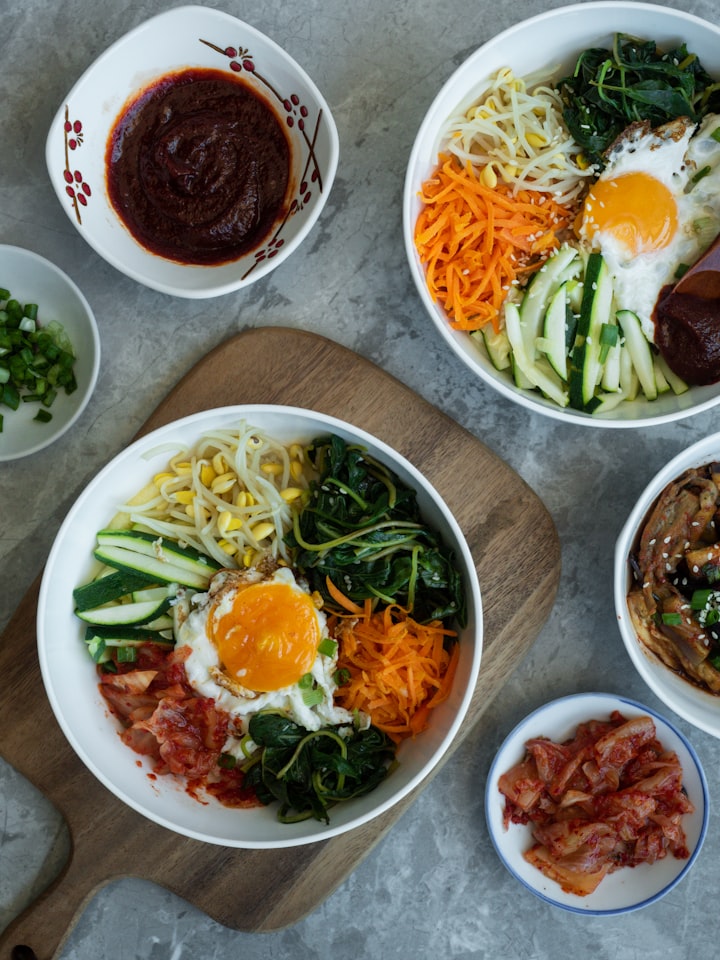World Cuisine from the Comforts of Home
(Usually)
Having only been outside the United States twice in my life, I would not call myself a globetrotter by any means; however, I have had the privilege of sampling cuisine from many cultures, beginning with the Indonesian and Dutch cuisines that my paternal grandparents brought with them when they immigrated to the U.S.A. in the 1950s.
My absolute favorite of the dishes that I grew up with is an Indonesian one called Nasi Goreng, and it is a rice dish with bacon, celery, onions, green onions, ground beef, soy sauce, garlic, curry powder, sometimes slivered almonds, and crushed red pepper flakes. All of this is prepared in a skillet, mixed with the rice, and plated. Then the whole thing is topped with a fried egg (or two or three). If the yolks are left intact while frying, then they sort of mitigate the heat of the red pepper flakes. It makes the skin under my eyes sweat and my nose run--mostly because I always at least double the amount of red pepper called for in the recipe--but I love it, and I always request nasi goreng for special occasions such as my birthday when I can get someone else to make it for me, like my dad. There is also bami goreng, which is the same dish but with noodles instead of rice, though I prefer the rice myself.
I’ve also had a Dutch dish called Hutspot, which is kind of boring, but good for you. From what my grandparents told me, this dish was made during the German occupation of the Netherlands during World War II; food was scarce, and the people needed something that would fill them up and be nourishing as well. It is made of potatoes, carrots, onions, and sometimes meat, all mashed up. It is served on a plate, usually mixed with butter, salt, and pepper—though Grandpa always added Sambal Oelek chili paste to give it more flavor (and a heck of a kick!).
I would be remiss if I did not include Dutch boterkoek and stroopwafels in my list of favorite foreign foods. Boterkoek translates to “butter biscuit” in English, though it looks like a blonde brownie, in that it’s baked in a long, rectangular baking dish and cut into squares for serving. It is made with a lot of butter, along with other ingredients, and egg whites are baked on top to give it a shiny crust.
There are American knock-offs of stroopwafels (especially in places like Starbucks) nowadays, but none, I’m told, are nearly as good as having them fresh and hot from a Dutch streetside vendor. Alas, the one time I visited the Netherlands, I could not find any of those vendors from which to buy a stroopwafel, as I was not feeling well, and went out on the wrong days, but there are places online from which you can order some genuine stroopwafels; they are just not fresh and hot. I did, however, find a vendor in Amsterdam from which I bought a small order of poffertjes, which are miniature pancakes often served about a dozen to a plate with butter and powdered sugar.
Perhaps not so exotic, but no less delicious, are the muffins my husband and I had at the place we stayed while we were on our honeymoon in New Zealand. We stayed in a small lodge owned and operated by a lovely older couple in Waihi Beach, on the north island. As it was late January, New Zealand was experiencing the tail end of its summer season. Every morning that my husband and I were there, we had breakfast with the older couple and any of their other guests, and they had these lovely fresh-baked muffins, made with real fruit. I have never had such scrumptious, moist, and appetizing muffins since. I wish I had gotten the recipe from the owners, but if I recall correctly, they did not have it written down; it was all in their heads, and they just threw them together each morning, changing the fruit included depending on what they had at the time.
I have also come to appreciate Indian food over the years. One of my favorite Indian dishes is Matar Paneer, or peas and cheese in a special (green) sauce. I usually add rice to it, and also sometimes scoop it onto some naan.
Since moving from Maryland to the Deep South of South Carolina/Georgia, I have also found a Korean dish that I enjoy. It is like Nasi Goreng, in that fried eggs and are involved, and it’s spicy, but the spices are different, as are the included vegetables. That dish is called Bibimbap, and there is often carrots, and the other vegetables can vary. I believe the few times I’ve had it, there were bean sprouts and onions as well. Traditionally, there is raw beef as well, but I have only had it with cooked beef in it. I have also never had it with seaweed, which I have heard is another traditional ingredient.







Comments
There are no comments for this story
Be the first to respond and start the conversation.